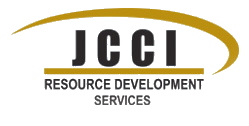How Competitive is Federal Grant Funding?
It’s the question on everyone’s mind when considering applying for federal grants: what are the odds of being approved for funding? Just how competitive is federal grant funding? The question is legitimate since applying for a grant can consume both human capital and financial resources when organizations and institutions often have little of either to spare. At the same time, receiving competitive federal grant funding can be the catalyst for moving programs and even entire organizations to the next level of service. Grant funding allows nonprofit institutions to do more than they could ever do without significant capital investment, so pursuing federal grants is definitely worthwhile.
During a 2017 conference for community college grant writers, a representative from the U.S. Department of Education answered questions from conference participants about the recent Title III Strengthening Institutions (SIP) grant cycle. The questions and the answers provided during this session shed some light on the competitive nature of that particular grant, and the statistics are likely similar for many other federal grant competitions.
U.S. DOE received more than 125 applications for the 2017 Title III SIP Part A grant funding cycle. Only 10 applicants received funding. The cutoff grant application score for the Title III SIP competitive grant funding was 103 which included a perfect score on the criteria (100 points) plus utilization of a tie-breaking method to determine grantees. It often happens that the Title III SIP selection process ends in a tie and funds are not sufficient to fund all institutions. In this case, the U.S. DOE awards up to three additional points based on 1) total market value of endowment fund during a base year, 2) total expenditures for library materials during a base year, and 3) activities that the applicant proposes to carry out in the application. In the 2017 cycle, no applicant with a score below 103 received funding, and many applicants with scores of 103 did not receive funding.
The good news from this extremely competitive federal grant funding cycle is that DOE may decide to “fund down” in the following year rather than announcing a new cycle of funding for grant applicants (as they often do). To “fund down” means that the DOE will review high-scoring applicants from one year’s competition to make additional funding awards rather than asking all applicants to submit grant requests again. For the institutions with high-scoring submissions, that news is especially welcome as it means the resources put into that above-perfect scoring application might still result in federal grant funding.
Planning Ahead
Considering the competitive nature of these types of federal grants and JCCI Resource Development Services’ experience with funded proposals, we know there are some steps to take in making a grant application as competitive as possible. Planning ahead is the most effective means of writing a winning grant, and that means planning as far out as a year ahead. Many institutions who received funding in the latest DOE Title III SIP funding cycle had been outlining their needs and planning their strategies a year ahead of beginning the grant submission process. These institutions were able to gather compelling data during this time frame and were able to generate the best solutions to their problems. Waiting until the U.S. DOE announced the grant funding cycle before thinking about the best ways to serve students and gathering supporting data simply would not allow enough time to lay the groundwork for a successful proposal.
After competitive federal grant funding opportunities are announced, applicants must still research specific grant opportunities to ensure they can meet all grant criteria and that the institution’s project and needs align with specific desired grant outcomes. RFPs and FOAs will include details about the amount of funds available, the cap on award amounts, total number of awards planned, grant project timelines, evaluation and reporting requirements, restrictions on use of grant funding, and a host of other helpful details to help organizations decide whether to apply. Because federal grants are highly competitive, ensuring that organizational goals match grant funding goals is crucial to success. Planning well in advance of a grant announcement and appropriate research of grant criteria are vital for developing a grant proposal that will be competitive.

